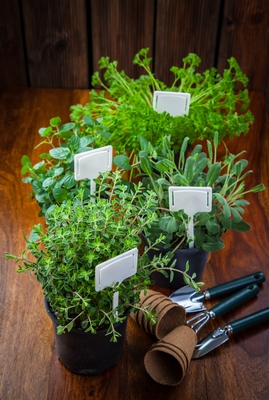Weekend Warrior: Create an Indoor Herb Garden this Weekend

The changing of seasons means the bounty of fresh vegetables and herbs from your garden will dwindle away upon the arrival of colder temperatures. This doesn’t mean you can’t create an indoor herb garden and enjoy the taste of homegrown herbs throughout the year. Creating an indoor garden does not require a lot of space, nor a green thumb – and it can be done over the course of a weekend.
An indoor herb garden will need a sunny window that receives at least five hours of sunlight per day. A home temperature between 60 to 70 degrees Fahrenheit is ideal. Other materials required for this weekend project include: pots with drainage holes, a saucer or water catcher to hold excess water, gravel, fresh soil, herb seed packets or starter plants, and plant markers. Note that whatever container you decide on should be deep enough to promote proper root development, about 6-12 inches deep.
Once all materials are purchased, start by filling the bottom of each pot with about ¾-inch of gravel. Pour a 2-3 inch layer of potting soil on top and place your plant/seeds gently into the container. Finish filling it with potting mix, pressing it down firmly around the plant/seeds.
While it may be tempting to water your herbs frequently, resist watering them too often, as excess water is harmful to the roots and may cause rotting. Fertilize the plants once a month with a product labeled safe to use on edibles.
Herbs that are great for indoor growth include:
- Basil – simple to grow from seed but needs bright light and warm temperatures
- Chives – A member of the onion family and best used fresh. Thrives in bright light and cool temperatures
- Thyme – Cover the seed only lightly with soil or not at all if you are starting from scratch. Keep the plants moist until they start flourishing.
Fun ways to display or pot your herbs:
- Create a hanging garden by using hooks and a tension rod. Paint all the elements in one color, fix the pots to the hooks, and put the rod in the window.
- Drill holes in an old teacup set with a jewelers drill and use them as planters. The water will be able to drain in the saucers. Thyme prefers dry soil so try putting it in a shallow container like this.